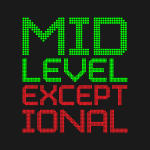How Future Televison Deals Could Affect NBA Salary Cap
The art of landing lucrative television contracts represent a major source of income for the NBA. Time Warner Cable and the Los Angeles Lakers have perhaps the most talked about deal, in which the Lakers receive about $150 million per season from Time Warner. Obviously, this isn’t a realistic deal for most teams in the league; not everyone can play in Los Angeles, and not everyone has Kobe Bryant. Regardless, it speaks a bit to how the financial landscape of the league could change in coming years.
Basketball Related Income is a measure used by the NBA to determine the annual salary cap figure. Amongst other factors, such as ticket sales and other arena revenues, television contracts play into the total BRI figure each year. Essentially, the more money the league makes, the more teams can spend without having to pay a luxury tax. The NBA is a massive business with plenty of revenue streams, but it’s still hard to ignore the impact that one or two big television deals would have on the league’s BRI, and thus, on the salary cap.
The previously mentioned deal between the Lakers and Time Warner, via SB Nation, added a whopping $3 million to the annual salary cap figure. On a smaller scale, also via SB Nation, the relatively new television contract with the Boston Celtics and CSN New England contributed around $380,000 to the salary cap number. There is obviously a huge range here, but it goes to show that even a deal much smaller than Time Warner’s can still have an impact.
After the 2015-2016 season, there will be several large dominos that will fall in the television rights market; the NBA’s deal currently worth $930 million per season with ESPN/ABC and TNT will expire, and the recently purchased Los Angeles Clippers will be looking for a new local televison contract. Kurt Badenhausen of Forbes claims that the expected fierce bidding will lead to a league contract worth roughly double the current one, which would have a huge impact on the annual BRI.
Additionally, it’s very reasonable to believe that the $2 billion Los Angeles Clippers will demand more than the $25 million that they currently earn annually with Prime Ticket. With Chris Paul, Blake Griffin, and Doc Rivers now in town, along with the growing popularity of the league and the looming uncertainty surrounding the Lakers, there could soon be two monster television contracts in Los Angeles.
It wouldn’t be responsible to predict a deal worth $150 annually, but one worth significantly more than the one between the Celtics and CSN New England is more than attainable.
So, how does all of this filter down to the court?
The projected 2014-2015 salary cap figure is $63.2 million, which represents more than a $4 million jump from the 2013-2014 season. Nothing is final until the league’s audit is complete, but the estimate is more than worth noting. When you throw in the BRI contribution from the new television deals following 2015-2016, it looks like the salary cup number will continue to rise at a fast pace.
As players like LeBron James, Dwyane Wade, Chris Bosh, Carmelo Anthony, Pau Gasol, Luol Deng, Lance Stephenson, Eric Bledsoe, and others can soon enter free agency, NBA general managers may not have to worry as much about depth if they can land a “Big Three.” This year’s $4 million bump may not seem like much, but when you look around the league at payrolls, it’s easy to recognize that just a few million can push a very good team to a championship level.
We can’t all be R.C. Buford, but let’s look at San Antonio’s payroll for a second; Danny Green, Marco Belinelli, and Patty Mills all make less than $4 million annually, and all three were valuable contributors to the team that dominated the two time defending champs.
Ray Allen and Shane Battier, who were both huge in helping push the top heavy Heat to two rings, both made less than $4 million this past season.
Make no mistake; signing three maximum level players will still put a strain on general managers to fill out the roster properly. You still have to depend a bit on veterans taking a pay cut to compete and take a lesser role, and sometimes, you have to get a little lucky as well.
Let’s not forget, despite what Heat critics will claim, convincing three of the best players in the world to all play for the same team is still difficult.
As the stars figure out where they should play, this has to be in the back of their mind. The Chicago Bulls will have to pay a big price if they hope to bring Melo alongside the likes of Derrick Rose and Joakim Noah. However, it has to be of some comfort to Melo that as the BRI of the league increases, the Bulls will have enough money each year to add an impact player or two.
LeBron should have a similar thought process. He likely doesn’t want to be seen as a star jumping around from team to team to chase rings, but the Heat badly need to add role players around him as Wade continues to age. King James has the financial savvy to understand that if the league stays on its current path, his Heat should have enough money to add an impact player every year to help keep the team competitive.
Imagine if the Heat had an extra $4 million last offseason to spend on a reliable veteran as opposed to taking chances on the likes of Michael Beasley and Greg Oden?
The NBA will continue to grow, particularly if billionaires keep bidding against each other to pay ridiculous amounts of money for franchises. This will pay huge dividends as the league negotiates the next television contract, and on a lesser scale when the Clippers look for a new local deal. It will trickle down to a consistently growing salary cap, meaning that the era of superstars teaming up may not end any time soon.
References:
http://www.forbes.com/sites/christinasettimi/2014/01/22/the-nbas-richest-local-television-deals/
http://www.sbnation.com/nba/2011/7/18/2281497/boston-celtics-tv-deal-comcast-sportsnet-new-england


